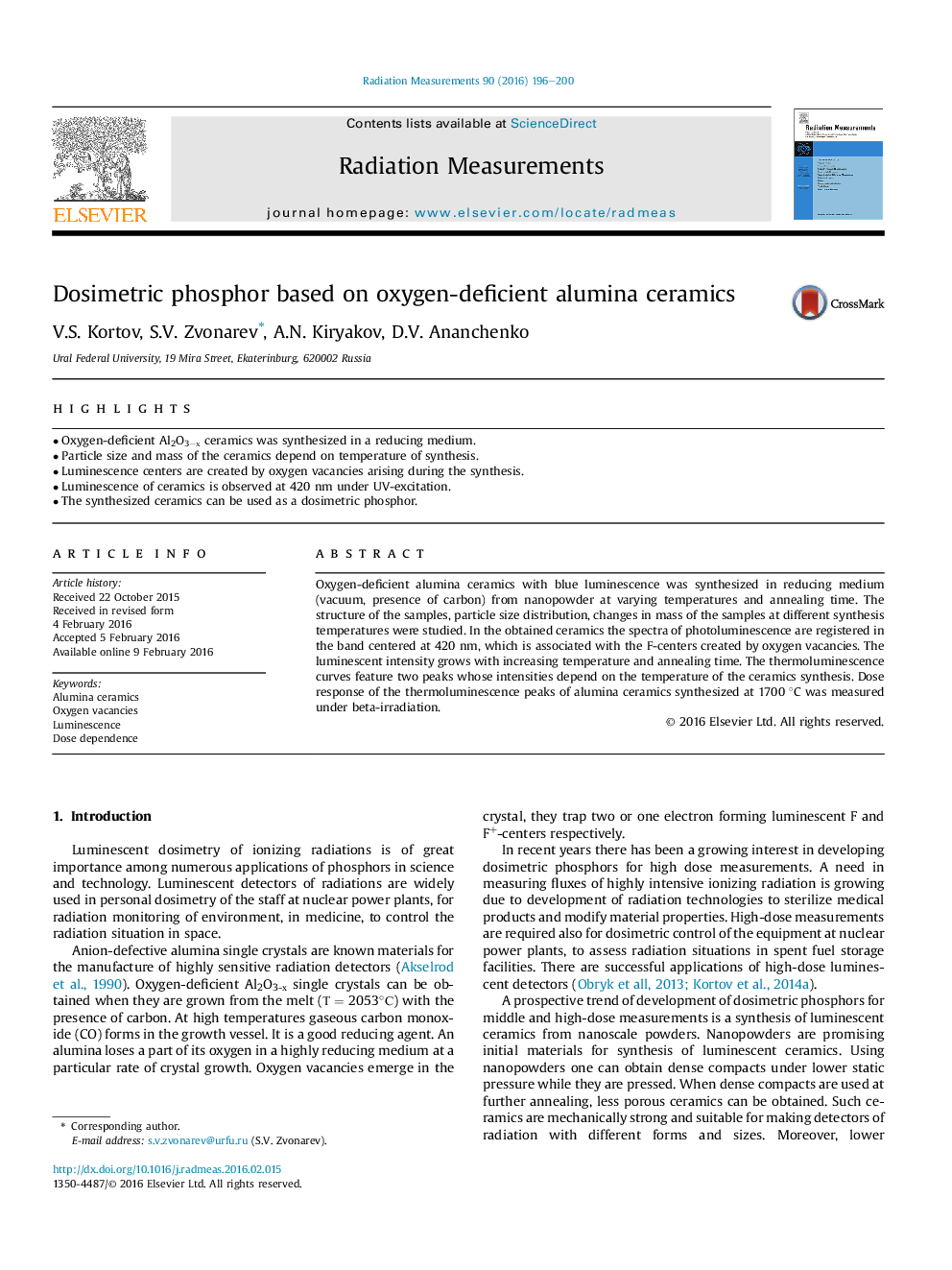| کد مقاله | کد نشریه | سال انتشار | مقاله انگلیسی | نسخه تمام متن |
|---|---|---|---|---|
| 1888041 | 1533400 | 2016 | 5 صفحه PDF | دانلود رایگان |
• Oxygen-deficient Al2O3−х ceramics was synthesized in a reducing medium.
• Particle size and mass of the ceramics depend on temperature of synthesis.
• Luminescence centers are created by oxygen vacancies arising during the synthesis.
• Luminescence of ceramics is observed at 420 nm under UV-excitation.
• The synthesized ceramics can be used as a dosimetric phosphor.
Oxygen-deficient alumina ceramics with blue luminescence was synthesized in reducing medium (vacuum, presence of carbon) from nanopowder at varying temperatures and annealing time. The structure of the samples, particle size distribution, changes in mass of the samples at different synthesis temperatures were studied. In the obtained ceramics the spectra of photoluminescence are registered in the band centered at 420 nm, which is associated with the F-centers created by oxygen vacancies. The luminescent intensity grows with increasing temperature and annealing time. The thermoluminescence curves feature two peaks whose intensities depend on the temperature of the ceramics synthesis. Dose response of the thermoluminescence peaks of alumina ceramics synthesized at 1700 °C was measured under beta-irradiation.
Journal: Radiation Measurements - Volume 90, July 2016, Pages 196–200
